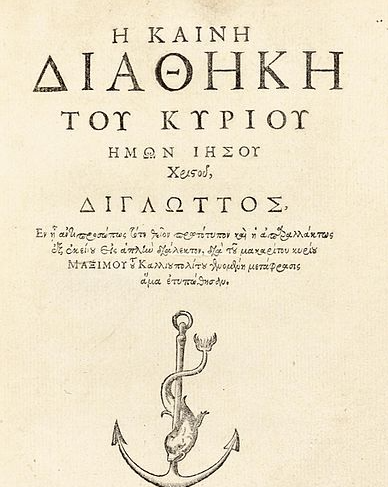FIRST EDITION
A Theory of Original Autograph Variations at
the Very Outset of Folio Production
by Mark Mountjoy
When it comes to the variations found in the thousands of New Testament manuscripts that have survived from antiquity, scholars have often assumed that these differences are the result of scribal errors or intentional changes made during the copying process over the centuries. However, there is another possibility that is worth considering, even if it cannot be definitively proven or disproven. The Atavist theory suggests that the variations in the New Testament manuscripts could be the result of the original authors or their scribes (known as amanuenses) writing multiple copies of the same text, each with slight differences. In other words, the variations we see today may not be due to mistakes or alterations made by later scribes, but rather reflect the fact that the original documents were not identical to begin with.
This idea challenges the common assumption that each New Testament author wrote their work only once, and that all subsequent copies were made from this single original. Instead, the Atavist theory proposes that the authors or their amanuenses may have produced multiple "original" copies, each with its own unique characteristics. There are several reasons why this theory is plausible.
First, in the ancient world, it was common for authors to dictate their works to scribes, who would then write down the words on papyrus or parchment. This process allowed for the possibility of slight variations in wording or phrasing each time the text was dictated.
Second, if an author wanted to distribute their work to multiple churches or individuals, they may have created several copies themselves or had their scribes do so. In the process, they may have made minor changes or adjustments to the text to suit the needs or circumstances of the intended recipients.
Third, even if an author wrote out their work by hand, they may have produced more than one copy. In the case of a letter, for example, they may have kept a copy for their own records while sending the original to the addressee. Over time, both copies could have been reproduced and circulated, leading to the variations we see in the manuscript tradition.
While the Atavist theory is intriguing, it is important to acknowledge that it is speculative and cannot be proven with certainty. We simply do not have enough evidence to determine definitively how many copies of each New Testament writing were initially produced, or whether the authors themselves were responsible for any variations. However, the theory does offer a fresh perspective on the question of New Testament manuscript variation. It suggests that the differences we see in the extant copies may not be the result of scribal errors or tampering, but rather reflect the diversity that was present from the beginning. This, in turn, could have implications for how we understand the transmission and preservation of the New Testament text.
Ultimately, while we may never know for certain whether the Atavist theory is correct, it is a valuable reminder that there is still much we do not understand about the earliest stages of the New Testament's composition and circulation. It encourages us to keep an open mind and to consider alternative explanations for the textual variations that have long puzzled scholars. At the same time, it is crucial to remember that the core message of the New Testament remains clear and consistent across all the manuscripts, despite the variations in wording and phrasing. The essential truths about Jesus Christ, his life, death, and resurrection, and the way of salvation that he opened for us, are faithfully preserved in all the extant copies.
In the end, while the Atavist theory may offer a new way of thinking about the origins of New Testament manuscript variation, it does not change the fundamental reliability and authority of the Scriptures as the inspired word of God. We can continue to trust that the New Testament we have today is a faithful representation of the original writings, even if those writings may have been more diverse than we once thought.
Related
Islamic Claims About the Corruption of the Bible

